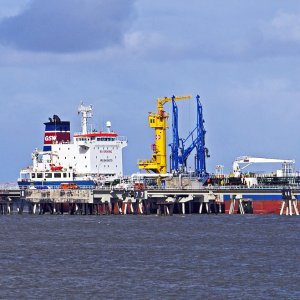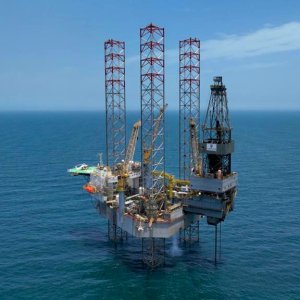
Pipelines and Logistics Create New Opportunities
PIPELINES SNAKING ACROSS MEXICO
The midstream sector is experiencing heightened activity as various natural gas pipelines are constructed to connect Mexico to the abundant and affordable natural gas supply resulting from the US shale gas boom, and ensure that this natural gas can find its way to consumer markets along both coasts and in the center of Mexico. The Energy Reform resulted in a drastic reorganization of the sector, illustrated by the transfer of PEMEX’s pipeline infrastructure to Mexico’s new operator of the pipeline system, CENAGAS. This new technical operator will inherit PEMEX’s rights and obligations in the operation and maintenance of the pipeline system, although this transfer of duties will require both parties to work together for a couple of years. Likewise, the importance of natural gas in electricity generation reaffirms CRE’s role as a highly relevant regulator in this area. An interesting aspect will be the crossover of areas where the two productive enterprises of the state operate. For instance, CFE is now seeking to commercialize natural gas. The utility company and now gas distributor is planning to add 1,647km to the national pipeline system by 2018, expanding its transportation capacity by 5.78bcf/d. Although these projects are primarily intended to supply natural gas for CFE’s plants, they will also benefit the industrial sector. Five major projects to increase the supply of natural gas from the US have been announced: Waha-Samalayuca, Waha-Ojinaga, Ojinaga-El Encino, El Encino-La Laguna, and Enherenberg-San Luis Rio Colorado.
CFE is also tendering infrastructure projects to import shale gas from Waha, Texas to help meet Mexico’s increasing demand. Waha-Samalayuca pipeline is one of these projects; this 300km pipeline will have a 1.450bcf/d capacity and is set to require an investment of US$550 million. The transported natural gas will ultimately supply CFE’s Norte III combined cycle plant in Ciudad Juarez. The Waha-Ojinaga pipeline will have a length of 230km, transporting 1.350bcf/d and triggering an estimated US$400 million in investments. The Ojinaga-El Encino pipeline will transport 350mcf/d across 244km in the state of Chihuahua. Through its subsidiary Gasoducto de Aguaprieta, IEnova will be responsible for the construction, operation, and maintenance of this pipeline. Given that IEnova has already invested more than US$2.4 billion in gas and power infrastructure, and plans to invest an additional US$1.5 billion in the coming years, the company will play a central role in pipeline activity in Mexico in the future. The El Encino-La Laguna pipeline, the largest of the five, will transport natural gas from Texas over 423km through the states of Chihuahua, Coahuila, and Durango, and will connect with IEnova’s Ojinaga-El Encino pipeline.
This pipeline is meant to cover CFE’s need for natural gas for electricity generation in the center of the country. The contract was awarded to Fermaca, which will be in charge of design, engineering, supply, construction, and maintenance. With a 42in diameter, El-Encino-La Laguna will transport approximately 1.5bcf/d. According to CFE, this project will need an investment of US$650 million and should begin operating by March 2017. Finally, US$250 million will be needed to build the Ehrenberg-San Luis Rio Colorado pipeline, which will transport gas from Arizona to Sonora through a modest 130km pipelinewith a 130mcf/d capacity.
PEMEX’S PIPELINE INVOLVEMENT
Even before CFE tackled natural gas pipelines with such fervor, PEMEX embarked on a few projects of its own to address energy security issues. The shortage of pipeline capacity in the north of the country prevents industrial players from taking advantage of the cheap natural gas from the US, where prices have dropped to around US$4 per million btu in recent years. This has incited Mexican authorities to push the development of pipelines in the north of the country to supply industrial hubs in the border states and gradually expand the system to reach the central region. The most meaningful project of this kind is the Los Ramones pipeline, one of the most ambitious natural gas projects Mexico has ever embarked on. Commissioned during President Felipe Calderón’s administration, Los Ramones is intended to satisfy 20% of the national demand for natural gas. Construction began in December 2013, and the first phase was inaugurated a year later. Gasoductos de Chihuahua, a joint venture between PEMEX’s TAG Pipelines and IEnova, Sempra Energy’s Mexican branch, will be in charge of the operation of the pipeline for 25 years. The pipeline has a capacity of 1bcf/d, although expansion plans are already being tabled. Running for 114km, Los Ramones I goes from Agua Dulce, Texas, and crosses the state of Tamaulipas all the way to the Los Ramones municipality in Nuevo Leon. This stage required an investment of US$688 million.
The second phase of the project, Los Ramones II, will begin at Caramago, Tamaulipas, traverse Nuevo Leon, San Luis Potosi, Queretaro, and Guanajuato, totaling 740km and a capacity of 1.43bcf/d aimed at covering the needs of the industrial sector. The project poses great technical and financial challenges, as it will cover 742km and requires an investment of US$1.847 billion. Its hefty price tag and technical and operational complications discouraged certain companies from participating in the bidding process. Only the consortium formed by Enagás and GDF Suez submitted a proposal, which PEMEX rejected because it did not comply with the technical and financial requirements. The project was again divided into two more sections: Ramones Norte and Ramones Sur.
Ramones Norte entails an investment of US$1.052 billion and will run across 441km, including two compression stations between Nuevo Leon and San Luis Potosi. The construction of the project was awarded in March 2014 to AOT, a consortium comformed of Brazil’s Odebrecht, Mexican firm Arendal, and Argentina’s Techint. The construction contract for Ramones Sur was awarded to ICA Fluor, a joint venture of Fluor Corporation and Empresas ICA, in April 2014. The section will cover 287km and will include a compression station between San Luis Potosi and Guanajuato. The needed investment is estimated at US$795 million.
In March 2015, BlackRock and First Reserve paid US$900 million for a 45% stake in Los Ramones II, helping PEMEX ease the effects of a planned US$4 billion in budget cuts. BlackRock is the world’s largest investment manager, with assets over US$4.77 trillion under management, while First Reserve is the largest global private equity firm exclusively focused on energy and raised more than US$23 billion of aggregate capital since inception. This is BlackRock’s first infrastructure project in Mexico and is part of the firm’s plan to expand its equity business by establishing a local infrastructure investment platform in the country. This transaction, in which private firms acquired meaningful stakes in such a project, also highlights the already visible effects of the Energy Reform. With the acquisition of Los Ramones II by BlackRock and First Reserve, the active participation of the private sector in the development of pipelines, PEMEX can now devote more resources to the activity where it can generate most value: the production of hydrocarbons.
LOGISTICS BOOM BENEFITS PORTS AND SHIPPING
The companies entering Mexico in Round One will boost the country’s upstream segment, creating plenty of opportunities for logistics along the way. For instance, the bidding rounds involving shallow water exploration and production blocks will increase the demand for offshore services, such as vessels for the transportation of personnel and oversized materials to platforms and rigs. Deepwater operations will demand similar services with a higher degree of specialization. The shipping market is expected to grow fast enough to trigger the development of local suppliers and the entry of foreign ones, leaving enough room for everyone to participate.
Ports that have secured a position as hubs for the Mexican oil and gas industry in traditional shallow water fields, such as Ciudad del Carmen, Dos Bocas, and Seibaplaya, will become more dynamic as new operators, suppliers and service providers will open facilities in these locations following Round One. However, other ports such as Tuxpan, Tampico, Altamira, and Matamoros are destined to see an increase in activity due to their proximity to Mexico’s deepwater assets in the Perdido region, while Veracruz and Coatzacoalcos are well positioned to serve the development and operational needs of deepwater areas such as Lakach. Alongside the ports, the shipping industry in the country is set to experience a boom in activity. Although rocked by the Oceanografía scandal last year and with low oil prices slowing down industry activity, expectations are high that the Energy Reform will trigger projects in shallow water and deepwater alike. To operate, to transport their staff, and to remain supplied, these platforms will require growing fleets to be based across Mexico’s port network on the Gulf of Mexico.
















